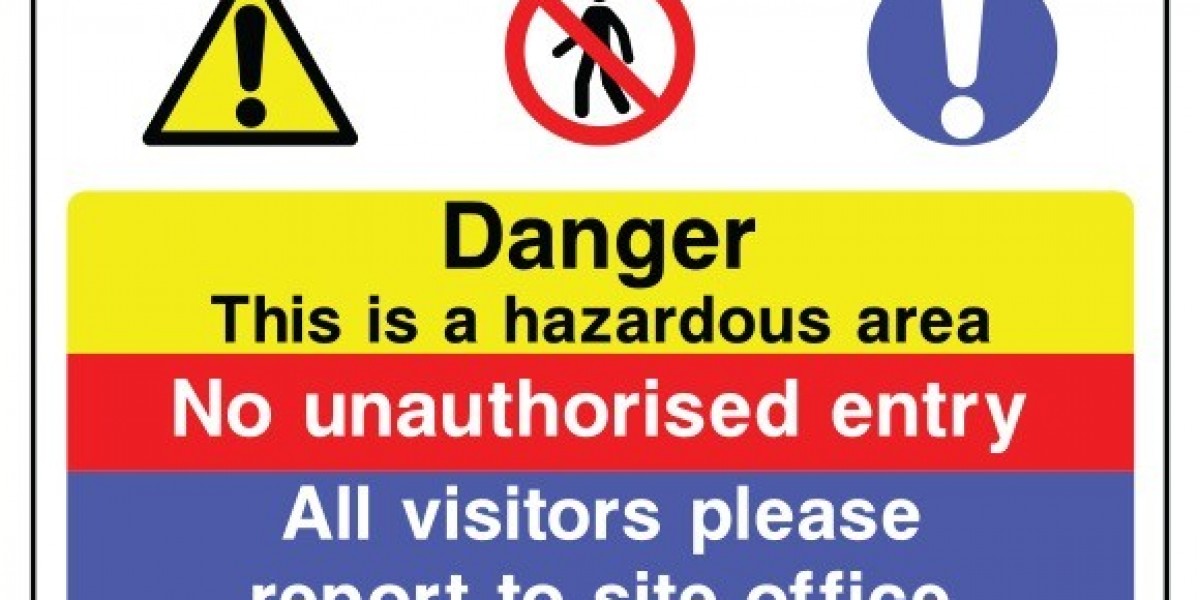In any work environment, safety is not just a priority; it’s a necessity. Among the most effective tools for maintaining a secure workplace are site signs, which act as silent communicators of important safety messages. They serve as visual cues, alerting workers, visitors, and contractors to potential hazards and guiding them on safe practices.
When safety communication is clear, it becomes easier for everyone to follow the correct procedures. This is why strategically using site signs is crucial for ensuring that important safety instructions reach every individual within the work environment. Well-placed, well-designed signs help reduce risks and build a culture of safety that benefits both employees and employers.
The Role of Site Signs in Workplace Safety
Site signs function as an easily recognisable visual language that helps bridge communication gaps, especially in diverse workplaces where employees may speak different languages. They ensure safety instructions are understood by all, regardless of background.
These signs provide instant recognition of hazards, required actions, or restricted areas. For example, warning signs can alert workers to hazardous chemicals or dangerous machinery, while instruction signs can direct people to emergency exits or first-aid stations.
In high-risk environments such as construction sites, these signs are particularly important. Construction site signs inform workers and visitors about potential dangers, site rules, and necessary protective measures. Without them, the likelihood of accidents significantly increases.
The continuous presence of site signs ensures that safety messages are reinforced throughout the day, reducing reliance on verbal reminders alone. This consistency in communication plays a major role in preventing injuries and maintaining a safe working atmosphere.
Understanding Safety Sign Categories
Safety signs come in different types, each with its own purpose and visual characteristics. Recognising these categories ensures that the right message is conveyed in the right way.
The main categories include:
- Prohibition Signs – Indicate actions that are not allowed, such as “No Smoking” or “No Entry”.
- Warning Signs – Alert workers to potential hazards, for example, “High Voltage” or “Slippery Surface”.
- Mandatory Signs – Instruct people to carry out specific actions, such as “Wear Safety Helmets” or “Eye Protection Required”.
- Emergency Information Signs – Provide directions to safety equipment or facilities, including “First Aid” or “Emergency Exit”.
Understanding the safety sign colour coding system is crucial. Typically:
- Red signifies prohibition or fire-related instructions.
- Yellow indicates caution and potential hazards.
- Blue is used for mandatory instructions.
- Green signals safe conditions or emergency equipment locations.
When these colours and shapes are applied correctly, they create a universal system that allows people to immediately understand the intended message without reading lengthy instructions.
Designing Effective Safety Messages on Site Signs
The design of a safety sign can make the difference between someone noticing it immediately or ignoring it entirely. Clarity is key. Messages should be short, to the point, and easily readable from a distance.
Symbols and pictograms are an important element. These should be internationally recognised so that the sign’s meaning is instantly understood, even by those who may not read the text. Using high-contrast colours also helps the sign stand out in busy environments.
The placement of graphics and text should follow a logical layout so the message flows naturally from visual to written instruction. This is particularly important when combining a safety sign colour code with a symbol and text, ensuring that all elements support each other in delivering the message.
Placement Strategies for Maximum Visibility
Even the best-designed safety sign is useless if it’s not placed correctly. Location is a critical factor in ensuring that messages are seen and understood in time to prevent hazards.
Signs should be installed at eye level whenever possible, positioned in areas where individuals naturally look when approaching a hazard or important safety point. Entry points, access routes, and hazard zones are prime locations for signage.
On construction sites, placing signs along walkways, near scaffolding, and at equipment stations ensures visibility for both workers and visitors. Signs should be visible from multiple angles, not hidden behind machinery or other obstacles.
Lighting is another important consideration. In poorly lit areas, reflective or illuminated signs can make all the difference. Photoluminescent materials are an option for signs that need to remain visible during power outages or low-light conditions.
Spacing is also important—placing too many signs close together can cause visual clutter, reducing their effectiveness. The aim should be strategic positioning that ensures clarity without overwhelming the viewer.
Materials and Durability Factors
The choice of materials directly affects how long a sign will remain effective. For outdoor and industrial settings, weather resistance is essential. Materials such as rigid PVC, aluminium, or foamex board are popular for their strength and ability to withstand harsh conditions.
For high-risk areas like building sites, construction site signs need to be sturdy enough to resist wind, rain, UV rays, and impact. Temporary signs may use lightweight materials for easy relocation, while permanent signs benefit from more robust construction.
Durability is also linked to maintenance. Even the toughest sign will need cleaning and periodic inspection to ensure it hasn’t faded or been damaged. Faded or cracked signs lose their ability to communicate clearly, so timely replacement is essential.
Legal and Compliance Considerations
Safety signage is not optional—it is a legal requirement in most workplaces. Regulations outline the types of signs required, their design, placement, and maintenance standards.
Compliance ensures that safety communication is consistent with recognised industry standards. Non-compliance can result in penalties, but more importantly, it increases the risk of accidents. By ensuring all site signs meet current safety requirements, businesses protect both their employees and their reputation.
Keeping up to date with any changes to safety regulations is an ongoing responsibility. Regular reviews and updates to signage ensure that it remains relevant and compliant.
Common Mistakes to Avoid in Safety Sign Usage
While signage is a powerful safety tool, it can fail if used incorrectly. Common mistakes include:
- Using outdated or faded signs – Reduces visibility and credibility.
- Cluttering one area with too many signs – Can overwhelm and confuse viewers.
- Ignoring language and literacy barriers – Not using clear symbols can limit understanding.
- Poor placement – Signs hidden behind objects or installed too high/low can be missed.
Avoiding these errors ensures that safety messages remain clear, visible, and effective.
Integrating Signs with Other Safety Measures
Safety signs work best when combined with other safety measures. Training programmes should explain the meaning of all signs, ensuring that everyone understands their purpose and responds appropriately.
Regular safety drills can reinforce the importance of signage, helping employees act quickly in emergencies. Coordinating signs with hazard assessments ensures that signage evolves alongside changes in the workplace environment.
Conclusion
Effective use of site signs is a vital part of workplace safety communication. When designed, placed, and maintained properly, they serve as constant reminders of hazards, rules, and safe practices.
A well-structured signage strategy supports legal compliance, reduces risks, and builds a culture where safety is embedded in daily operations. By combining clear messages, recognised symbols, and appropriate positioning, businesses can ensure their safety signs deliver maximum impact.
For high-quality safety signage that meets both functional and durability requirements, businesses can rely on Foamex Printing Company to provide solutions tailored to their needs.








